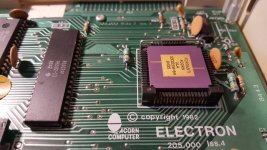Soldato
I bought a broken Acorn Electron with the intention of fixing it (look a bit like faulty RAM on the listing). So to bits it came;
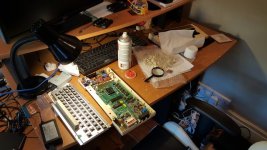
It turned out though that the ULA socket on the motherboard was damaged, sourcing a new socket was expensive and I wasn't confident I could replace it without damaging the board. So plan b was formed.
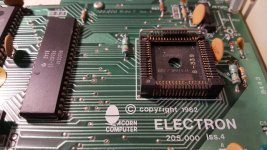
Turn it into a USB keyboard in a non-destructive way, so that it can be repaired by someone else in the future if they want.
First of all though, it needed the plastics sorting out as it had gone rather yellow. Tricky to photograph as the white balance on the camera kept correcting for it!
The top case with white paper underneath got it.
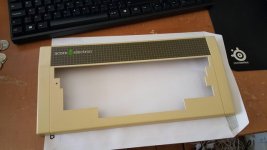
Time for some masking and BBlonde peroxide;
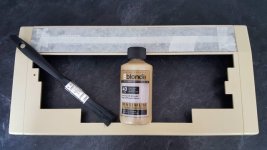
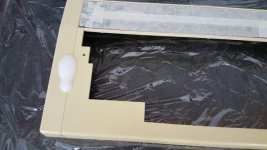
Wrapped it in cling film to stop it drying out and left it out in the sun
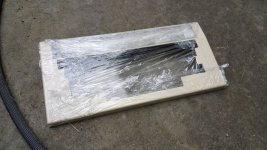
Comparing it to the base after one treatment
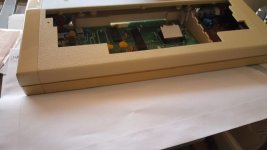
Certainly better but nowhere near good enough. Repeat and do the keys too;

Next up I did the lower case, and keys again. No more photos of that.
With that out the way, onto the bits of USB keyboard mode. Kits exist off the shelf for doing this but I wanted to roll my own. FRDM-KL25Z
Potato photo of the board being tested
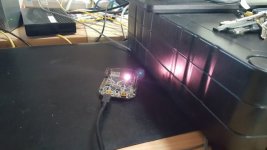
The board and wiring were suggested by https://www.instructables.com/id/Acorn-Electron-USB-keyboard/ I modified the software slightly to change the key mappings and opted not to remove the stock keyboard connector (as no destruction please) and instead used dupont cables with pins in the headers to allow me to join it all up.
Video of testing it
After testing, I found a few dead keys. Some of them began working after squirting contact / switch cleaner in and actuating them a few times. One or two required a poke with the soldering iron to reflow the joints.

Route the wire out of the case. I did buy a surface mountable socket for it, but could not work out how to securely mount it without drilling holes in the case.

And the end result;
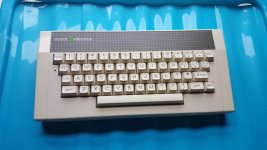
Quite pleased with it; I had great fun building it but I don't have it anymore as I posted to a good friend of mine as a surprise as his first computer was an Acorn Electron

It turned out though that the ULA socket on the motherboard was damaged, sourcing a new socket was expensive and I wasn't confident I could replace it without damaging the board. So plan b was formed.

Turn it into a USB keyboard in a non-destructive way, so that it can be repaired by someone else in the future if they want.
First of all though, it needed the plastics sorting out as it had gone rather yellow. Tricky to photograph as the white balance on the camera kept correcting for it!
The top case with white paper underneath got it.

Time for some masking and BBlonde peroxide;


Wrapped it in cling film to stop it drying out and left it out in the sun

Comparing it to the base after one treatment

Certainly better but nowhere near good enough. Repeat and do the keys too;

Next up I did the lower case, and keys again. No more photos of that.
With that out the way, onto the bits of USB keyboard mode. Kits exist off the shelf for doing this but I wanted to roll my own. FRDM-KL25Z
Potato photo of the board being tested

The board and wiring were suggested by https://www.instructables.com/id/Acorn-Electron-USB-keyboard/ I modified the software slightly to change the key mappings and opted not to remove the stock keyboard connector (as no destruction please) and instead used dupont cables with pins in the headers to allow me to join it all up.
Video of testing it
After testing, I found a few dead keys. Some of them began working after squirting contact / switch cleaner in and actuating them a few times. One or two required a poke with the soldering iron to reflow the joints.

Route the wire out of the case. I did buy a surface mountable socket for it, but could not work out how to securely mount it without drilling holes in the case.

And the end result;

Quite pleased with it; I had great fun building it but I don't have it anymore as I posted to a good friend of mine as a surprise as his first computer was an Acorn Electron



